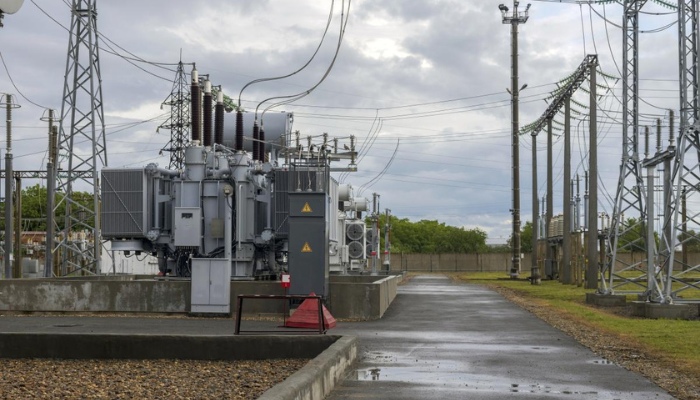In this post, we will discuss about the fault causes of overhead lines in distribution work and how to handle them properly;
1. When the neutral point is grounded through the arc suppression coil or a permanent grounding fault occurs in the non-earthing system, various technical means should be used to quickly judge and cut off the fault line or fault section. If the fault point cannot be found for a short time, it is advisable to cut off the power supply to find the fault point. If necessary, load switches or other equipment on the pole can be used to troubleshoot from the head end to the end, from the main line to the branch, and by pulling and closing section by section and level by level.
2. After the fuse on the line is blown, the column boundary load switch or the column circuit breaker trips, blind trial transmission is not allowed. The line and related equipment should be carefully inspected, and power transmission can only be resumed after confirming that there are no problems.
3. If a line fault trips but the reclosing is successful, the operation and maintenance unit should quickly identify the cause.
After repairing the discovered short circuit fault, all connection points (bow wire, grounding wire) on the power side of the fault point should be checked to ensure that there are no problems before power can be restored.
4. When the primary fuse of the distribution transformer is fused, the primary side equipment and transformer should be carefully inspected, and power can only be transmitted after there are no problems; When a two-phase or three-phase fuse or circuit breaker trips, a detailed inspection of the primary side equipment, transformer, and low-voltage equipment should be carried out. If necessary, the insulation resistance of the transformer should also be tested to confirm that there are no faults before power can be transmitted.
5.When the primary and secondary fuses (chips) of the transformer are blown, it is also necessary to check whether the rated current of the distribution transformer’s primary and secondary matches the selection of the fuses (chips); When oil, smoke, or shell overheating occurs in distribution transformers, circuit breakers, etc., the power should be disconnected and treated after cooling.
6. In case of abnormal conditions (such as smoke, internal discharge, etc.) of the Voltage transformer or lightning arrester of the 10kV switchyard, ring network unit bus, the power supply of the bus where the Voltage transformer is located should be cut off with a switch first, and then the faulty Voltage transformer should be isolated. The disconnecting switch on the power side of the Voltage transformer shall not be opened directly, and its secondary side shall not be paralleled with the secondary side of the Voltage transformer in normal operation.
Finally, When a fire or flood occurs in electrical equipment, operation and maintenance personnel should first try to cut off the power supply and then handle it.
PowerTel & his expert engineers are dedicated to providing you a total solution for your power distribution network, including technical consulting, initial & optimal design, package supply of materials ( ACSR wire, distribution transformer, fuse & circuit breaker, voltage regulator, electrical insulator, electrical switchgear and electrical switchboard etc), construction & installation, to final testing & comissioning.
Please feel free to contact us if you have any questions about your power distribution network.
Some general requirements while handling these fauts
1.Fault handling should follow the principles of protecting personal safety, power grid, and equipment. The location and cause of the fault should be identified as soon as possible, the root cause of the fault should be eliminated, the expansion of the fault should be prevented, and the power supply to users should be restored in a timely manner.
2. Before troubleshooting, measures should be taken to prevent pedestrians from approaching the faulty line and equipment to avoid personal injury or death accidents.
During fault handling, the scope of fault power cut and fault losses shall be minimized as far as possible. If necessary, emergency power supply access shall be considered to temporarily restore power supply.
3.When there are multiple faults, the processing sequence is to start with the main line and then branch lines, followed by the common transformer and then the dedicated transformer.
4.The order of restoring power supply to users with faults and power outages is: important users first, general users second, and priority given to restoring power to users with special and first level loads.
5.For circuits equipped with fault indicators, it is advisable to apply fault indicators and gradually locate the fault section from the power side for fault diagnosis and handling; For lines equipped with feeder automation, fault diagnosis and processing can be directly carried out in the fault section based on the information of the distribution automation system.
6. After the fault occurs, operation and maintenance personnel and emergency repair personnel should rush to the site in a timely manner to jointly carry out preliminary fault inspection work.
7.If the fault exceeds the level and causes a power outage to the higher-level equipment, it should be reported to the management department and dispatch department in a timely manner.
8. During the fault handling process, if the power grid operates abnormally due to fault handling, it is necessary to promptly report to the dispatch department and develop control measures for abnormal operation, and strengthen the inspection work of relevant equipment.
